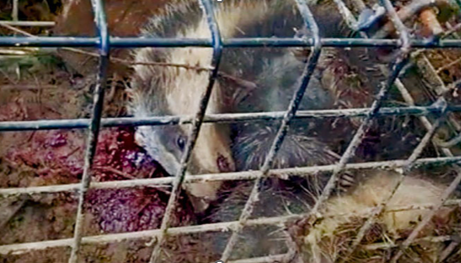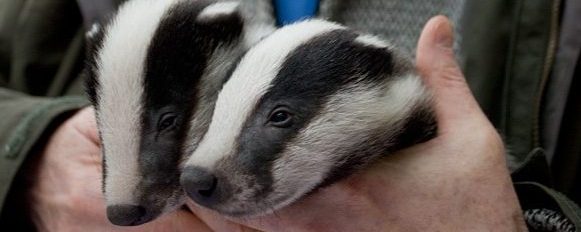
The continuing questions over uncertainty in the published outcome of the Randomised Badger Culling Trial (RBCT) have rumbled on over the summer of 2024, and were reported on (here).
Why are the statistical elements of the RBCT so important? Because the government badger cull policy rests all but entirely on them. It was the science that DEFRA has used to create policy and in court to defend their decisions to experiment with badger culling. The RBCT claimed badger culling can reduce bovine TB in cattle; very many subsequent studies are heavily derived from it, to the point that if it is wrong, it will send a wrecking ball through dozens of publications, reports and reviews. The stakes could not be higher.
Disease benefits claimed for badger culling by civil servants and politicians are in reality, far more likely due to implementation of additional cattle measures. But there is continued inference that badger culling is a cause of disease reduction because such benefits might be “predicted” from the results of the RBCT.
The chronology of published and pre-printed science on the statistical analysis of the RBCT as it relates to proactive culling is growing, so here is a summary with clickable links:
16th February 2006, “Positive and negative effects of widespread badger culling on tuberculosis in cattle” was published in Nature by Donnelly et al..
10th May 2019, “Badger Culling and Bovine TB in Cattle: A Re Evaluation of Proactive Culling Benefit in the Randomized Badger Culling Trial” was published in the Journal of Dairy and Veterinary Sciences by Langton.
13th December 2022, “Absence of effects of widespread badger culling on tuberculosis in cattle” was posted as a preprint on Research Square by Torgerson et al. .
12th May 2023. A revised version of “Absence of effects of widespread badger culling on tuberculosis in cattle” was pre-printed in Research Square, and submitted to Nature Scientific Reports by Torgerson et al…
15th July 2024. The final version of “Absence of effects of widespread badger culling on tuberculosis in cattle” was published in Nature Scientific Reports by Torgerson et al..
18th August 2024. Interim report on the August 2024 pre-publication response to the July 2024 re-evaluation of evidence and analyses of proactive culling (published in 2006), as a part of the Randomised Badger Culling Trial (RBCT), 1998-2005. Independent pre-publication report on the Mills et al papers to be published on 21.08.2024.
21st August 2024. “An extensive re-evaluation of evidence and analyses of the Randomised Badger Culling Trial (RBCT) I: Within proactive culling areas” and “An extensive re-evaluation of evidence and analyses of the Randomised Badger Culling Trial II: In neighbouring areas” were published in Royal Society Open Science by Mills et al..
16th September 2024. A ‘Comment’ response to the new Mills et al. 2024 papers was submitted to the Royal Society Open Science: “Randomised Badger Culling Trial lacks evidence for proactive badger culling effect on tuberculosis in cattle: comment on Mills et al. 2024, Parts I & II” by Torgerson et al.. This was pre-printed with bioRxiv on 20th September.
 The ‘Comment’ submission to the Royal Society Open Science is an extensive response to the two new Mills et al. (2024) papers which reproduced much of Torgerson et al.’s models, whilst re-interpreting the results.
The ‘Comment’ submission to the Royal Society Open Science is an extensive response to the two new Mills et al. (2024) papers which reproduced much of Torgerson et al.’s models, whilst re-interpreting the results.
The abstract of the Torgerson et al. ‘Comment’ is as follows:
Abstract
Re-evaluation of statistical analysis of the Randomised Badger Culling Trial (RBCT) by Torgerson et al. 2024 was rebutted by Mills et al. 2024 Parts I and II. The rebuttal defended the use of count rather than rate when considering bovine tuberculosis herd incidence. The defence makes biologically implausible use of Information Criterion for appraisal diagnostics; overfits data; and has erroneous Bayesian analyses. It favours ‘goodness of fit’ over ‘predictive power’, for a small data set, when the study was to inform application. Importantly, for ‘total’ bTB breakdown: (‘confirmed’ (OTF-W) +‘unconfirmed’ (OTF-S)), where modern interpretation of the main diagnostic bTB test better indicates the incidence rate of herd breakdown, there is no effect in cull and neighbouring areas, across all statistical models. The RBCT was a small, single experiment with unknown factors. With respect to the paradigm of reproducibility and the FAIR principles, the original RBCT analysis and recent efforts to support it are wholly unconvincing. The 2006 conclusion of the RBCT that “badger culling is unlikely to contribute positively to the control of cattle TB in Britain” is supported, but the route to such a position is revised in the light of modern veterinary understanding and statistical reappraisal.
The new Comment, that has not yet been peer-reviewed, highlights what is described as selective reporting, misleading interpretation, implausible model selection and coding anomalies. It will be of interest to Ministers, Civil Servants, scientists and politicians who currently, under the new Labour administration, are ‘refreshing’ the bovine TB strategy, and policy.
The two Mills et al. papers were published just a few days before the Intensive and Supplementary badger cull licences were issued for 2024, providing a rationale for culling to continue.




